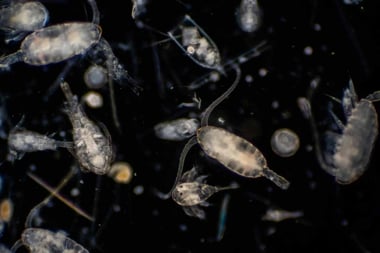
It seems that anywhere you go these days, you will see people-young and old, fit and not-so-fit-carrying one of many shapes, sizes, and colours of bottled water. Is it just a fleeting fashion fetish or is the portable, packable water bottle here to stay?
It seems that anywhere you go these days, you will see people–young and old, fit and not-so-fit–carrying one of many shapes, sizes, and colours of bottled water. Is it just a fleeting fashion fetish or is the portable, packable water bottle here to stay?
Bottled Benefits
Water is essential, and drinking enough of it is vital to sustaining good health. The availability and diversity of bottled water options in supermarkets, restaurants, gyms, and vending machines means that we can easily satisfy our need for water even when we’re on the fly.
Many people choose bottled water over municipal water largely as a matter of personal taste. Following much-publicized outbreaks in several Canadian communities, some people forgo tap water to avoid water-borne contaminants and bacteria that can cause illness. Others are concerned about the substances their municipal treatment plants add to their water, such as chlorine and fluoride.
Bottle Buyers Beware
At the risk of watering down the many claims of health benefits associated with drinking bottled water, it seems prudent to list some of the cautions. The most immediate concern is the quality of the water that we buy off the shelf, since not all bottled water is created equal.
An analysis of over 1,000 bottles from 103 different brands by the Natural Resources Defence Council found that some had bacterial counts far higher than tap water, although still not in excess of safety limits. A third of the samples contained various synthetic organic compounds as well as arsenic–the very things people are worried about in tap water.
Although bacterial contamination of bottled water is not a big issue, bacteria introduced from your mouth when you drink from a bottle can flourish. This is a concern if bottles are refilled with tap water without first being adequately cleaned.
And what to do about those ubiquitous bottles? According to an industry consultant, only 12 percent of plastic bottles in the US–mostly water–were recycled in 2003. Since most bottled water is consumed away from home, where recycling receptacles are often not available, many containers go straight into the trash or become litter.
Bottled Imperatives
Water is now the fastest-growing beverage category, with an average 10- to 15-percent annual sales growth over the past 12 years, proving that indeed, water’s no simple fashion accessory–it’s a rational necessity.
Read the Label
Like any prepackaged food, bottled water must carry the following labelling information:
- common name
- list of ingredients if it consists of more than one ingredient
- net quantity
- name and address of the company responsible
Additional Labelling Requirements Specific to Bottled Water:
For All Bottled Waters:
- fluoride ion content
For “spring” and “mineral” Water:
- dissolved mineral salt content
- statement indicating whether ozone or fluoride has been added
- statement relating the geographic location of the underground source of the water
For Bottled Waters, Other Than “spring” or “mineral” Water:
- description of any treatment the water has undergone
Source: Canadian Food Inspection Agency




